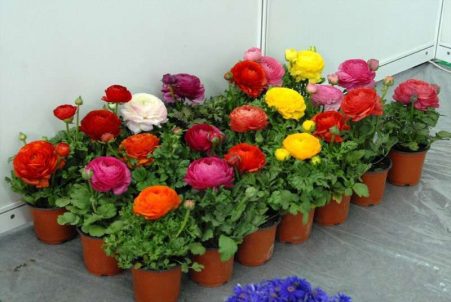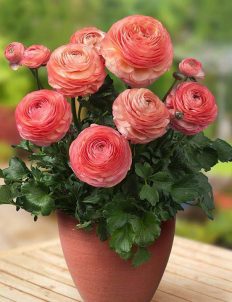Ranunculus or buttercup looks like a rose or a miniature terry peony, it belongs to the Lyutikov family. It is not always easy to grow it, but if the seedlings are healthy, the flowers can bloom very long from the beginning of summer to autumn.
Material Content:
Ranunculus: types and varieties of flowers
Ranunculus flowers have a different shape, bud size and color. Their diameter is up to 10 cm, the petals are densely arranged or, like a terry poppy.

There are about 500 varieties and, according to the classification, ranunculi are divided into the following types:
- French - with terry flowers of spherical shape, which can be terry or semi-double. Bred in France at the beginning of the XIX century, the color of the flowers is the most diverse, flowering begins in the summer.
- African or Turkish are like peonies. Terry or semi-double flowers, tall bushes.
- Persian ranunculi are surprisingly beautiful, like tea roses with petals tightly sitting in a circle. Grown in Holland from the end of the 15th century. Flowers of the most varied colors are sitting on tall stems, blooming in spring.
- Asian ranunculi are represented by modern hybrids with a tuberous root, similar to a small octopus. Terry flowers of various colors.
Tall and undersized varieties are suitable for open ground, and only small, compact varieties can be grown indoors.
For open ground
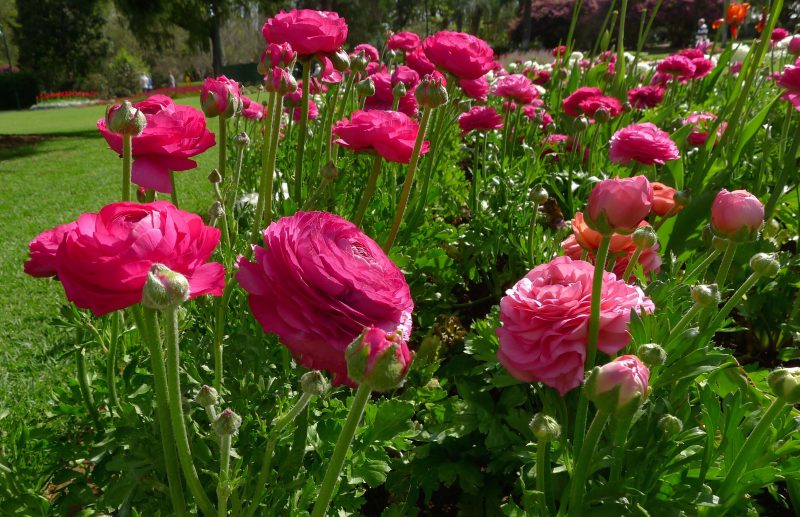
In the garden, the Asian variety of ranunculi is most often grown. Popular varieties:
- Ranunculus Double Pink Buttercap - stems 45 cm high, pink terry flowers with densely arranged petals;
- Ranunculus Mache F1 bicolor Mix - plant height up to 45 cm, double flowers, various colors, with a border on the petals;
- Ranunculus Rebecca mix - large inflorescences on short, stable stems, the color of the petals is diverse, very bright.
In greenhouses, garden ranunculi are grown year-round; some varieties can stand after cutting to a crescent.
For growing a house in a pot
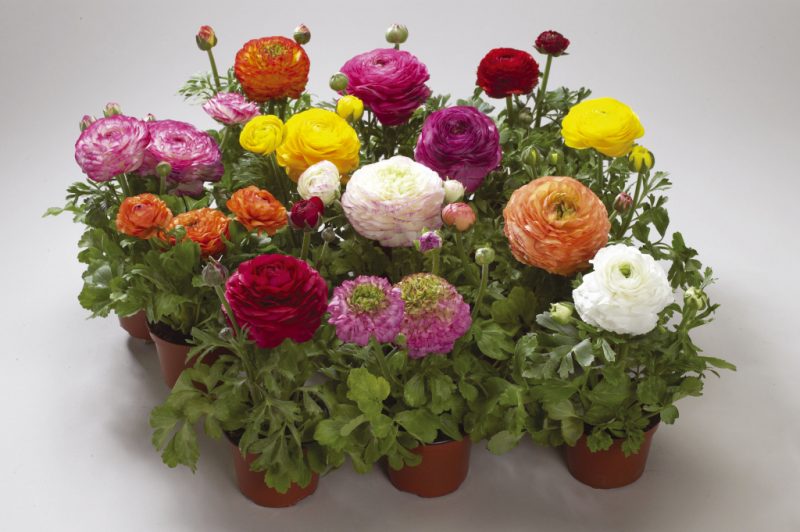
For indoor conditions use undersized or specially created varieties:
- Ranunculus Bloomingdale F1 mix - bush height up to 25 cm, small leaves, bushy flowers of various colors;
- Ranunculus Purple Picotee - lush white flowers with a purple color at the ends of the petals;
- Ranunculus Bloomingdale F1 mix Bicolor - flowers of all shades of red and yellow, densely doubled, bush height up to 25 cm;
- Ranunculus Bloomingdale Rose Bicolor - delicately pink flowers with a white core, similar to roses, bush height up to 25 cm.
Under favorable conditions, the plant in the apartment blooms 3 months after planting.
Outdoor landing
Ranunculi are not afraid of the rays of the sun, but they feel better in partial shade. Here, the color of the flowers will be brighter, and flowering longer. Root tubers or ready-made seedlings are planted in open ground.
Landing time
Depending on the weather, the planting of tubers in the flowerbed begins in late April or early May.

To distill seedlings, tubers are planted in pots with earth in mid-March. No more than 1 root tuber is placed in each pot so as not to disturb during growth. Young plants are transplanted into open ground with a lump of earth in early or mid-May, when steady warm weather sets in. It is especially important to grow seedlings for early flowering varieties.
Choose a place to land
The landing site should be well lit, but not in the southern flowerbed. It is advisable that part of the day the plant can be in the shade of trees or buildings growing nearby. During flowering, buttercups growing on open flower beds are advised to shade from the sun so that they bloom longer.

If there is a pond or watering column on the site, it is advisable to plant ranunculi nearby.
They love moisture, moist air and soil. But there should not be stagnation of water in the flowerbed.
How to prepare tubers and soil?
The tubers are soaked before planting. They are planted in mid-March so that the sprouts have enough natural light, and they do not stretch out, they grow strong.
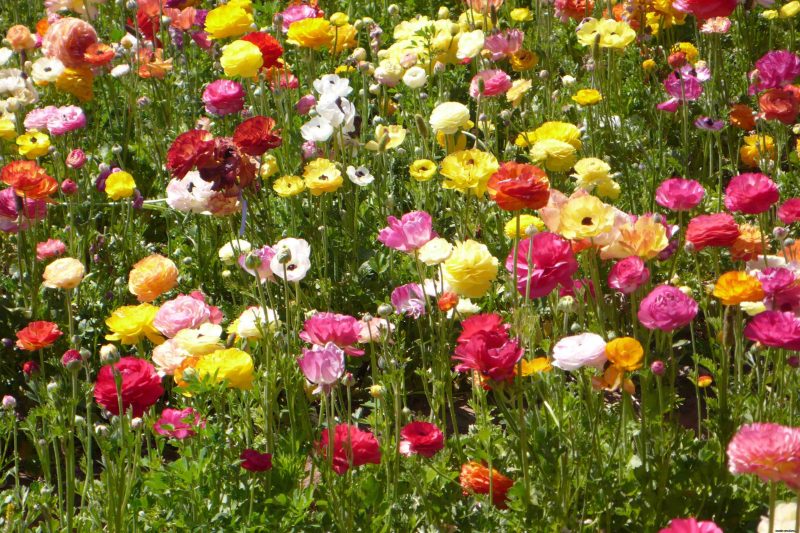
Tubers are placed in a container and filled with water. This must be done correctly:
- Take a napkin, moisten it in a solution of fungicide for pickling tubers or in a growth stimulator. You can use "Fitosproin" or "Maxim summer resident".
- The napkin is placed on the bottom of the container for soaking, pour a little water so that it does not completely cover the tubers.
- A container with tubers is covered with a film on top.
Keep tubers in water for 2 or 3 hours so that they swell. Then planted immediately in the prepared soil. The plot is prepared in advance. They dig it up, release it from weeds, add humus, peat and sand. The soil should be loose, with neutral acidity.
Landing Technology - Scheme
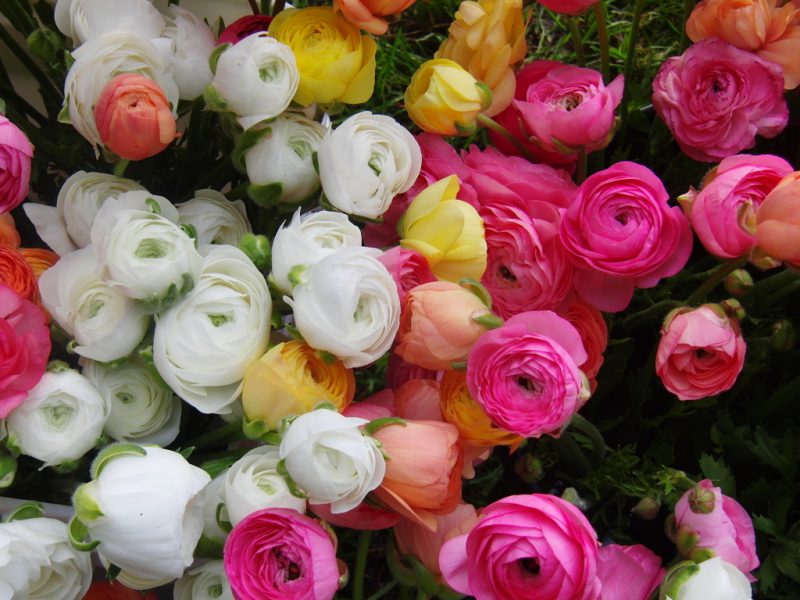
The roots of the plant look like small spiders with thick legs. When planting, the tuber is lowered “paws” down and buried in the ground by 6 cm.
The distance between the roots should be at least 10 cm. Over the summer they will grow children around themselves, and if you plant them closer, the plants will be crowded.
Ranunculus planting at home
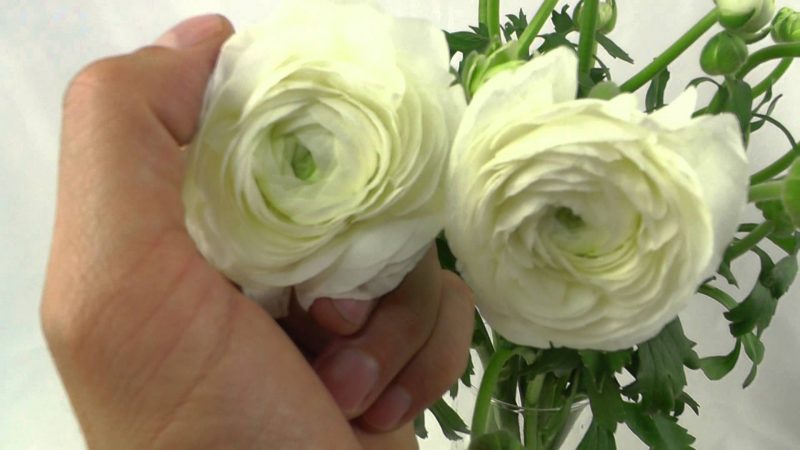
Ranunculus is grown at home in a pot from root tubers. When planting, the tubers cannot be deeply buried, they are sprinkled on top by no more than 2 cm. They buy universal soil with neutral acidity. Expanded clay drainage is necessarily placed at the bottom of the pot.
Seedlings need to be fed once every two weeks. If the lighting is insufficient, it is illuminated with fluorescent lamps.
Ranunculus Care
The plant does not like transplants. It is better to plant it in the open ground in the shade, and put it in the room near the eastern or western windows. During flowering, it is necessary to make potassium top dressing and reduce watering. This will extend the flowering time.
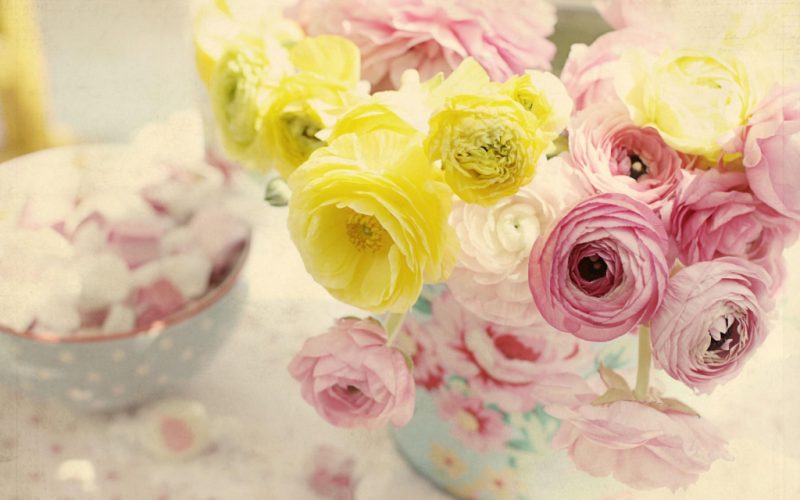
When grown in open ground, ranunculus tubers are dug up for winter and stored until spring in a room with a positive temperature.
If the flowers are grown in a warm region where the winter temperature does not drop below -3 ° C, you can not dig them out of the garden, but just cut and cover with a layer of mulch or straw and a film.
In the open ground
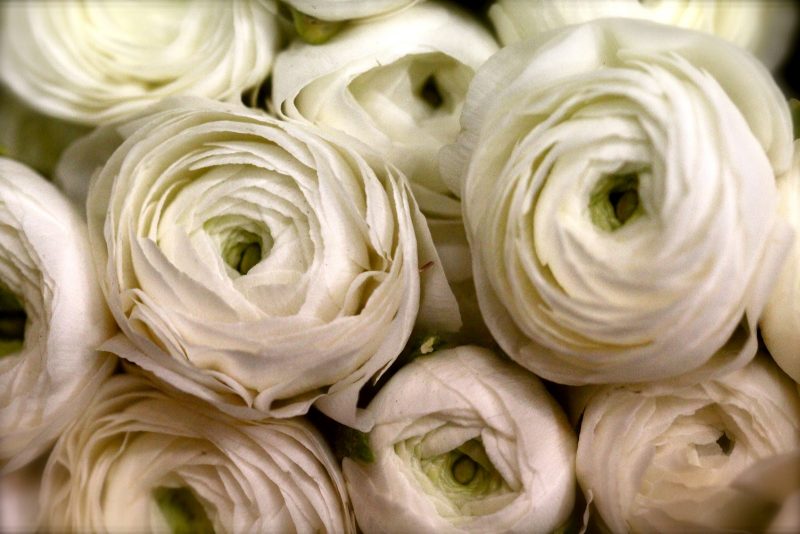
- On a flower bed, buttercups are watered in the summer every 2 or 3 days.
- The soil after irrigation is loosened once a week so that moisture does not accumulate at the base of plants - it can lead to root decay.
- Plants are fed with potassium-phosphorus fertilizers once every 2 weeks, weeds are removed.
- Faded inflorescences are cut so that new flowers begin to grow.
In late August, watering is stopped. The leaves of the plant begin to turn yellow, they must completely dry before digging up the root tubers for winter storage.
How to care for a flower at home
For distillation in room conditions, buttercups are planted from the end of summer to November, depending on which holiday you need to get a bouquet. Varieties of different colors are planted in one container to get the most attractive composition.
- Because of the hot, dry air in the apartment, flowers may lose their appeal. It is advisable that the temperature in the room be no higher than +21 ° C, and humidity - at least 50%.
- Home buttercups are fertilized with fertilizing for flowering indoor plants 2 times a month.
- Watered 2 times a week, loosen the soil in a pot so that the roots breathe.
- When wilted buds appear, they are cut.
Methods of breeding ranunculus
Buttercups are propagated by root tubers, which annually form several children. Sometimes they use the seed propagation method. Experienced growers are advised to replace every 3 years tubers of garden buttercups with new varieties. This is due to the fact that plants lose their attractiveness over time, degenerating due to viral diseases.
Seed method
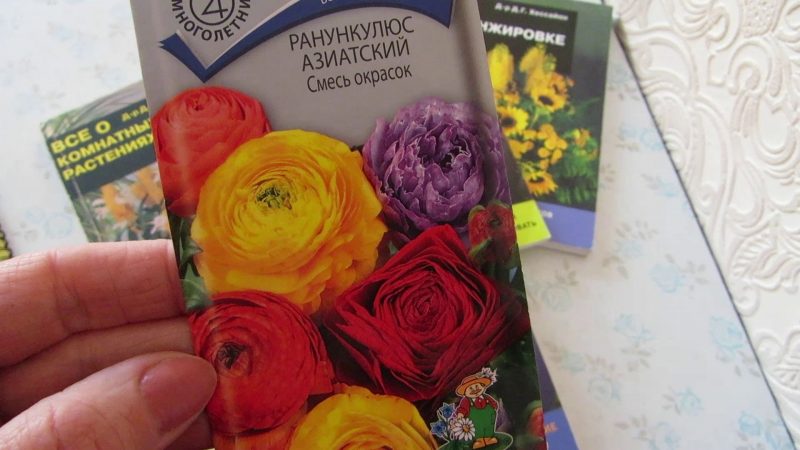
Some varieties of ranunculus, for example, Accolade, Double Mixed, Amalia Gaint are grown from seeds. But most of the varieties do not retain varietal decorative traits during seed propagation. Many gardeners say that seeds do not germinate well or do not germinate at all.
Tuber propagation
A year after planting, the ranunculus tuber gives children who can be separated and planted.

Each adult root tuber forms up to 7 children per season. They are separated in the fall when plants are dug up. To get the finished seedlings, tubers are placed in pots with soil in mid-March or planted in open ground in early May.
How and when to dig tubers
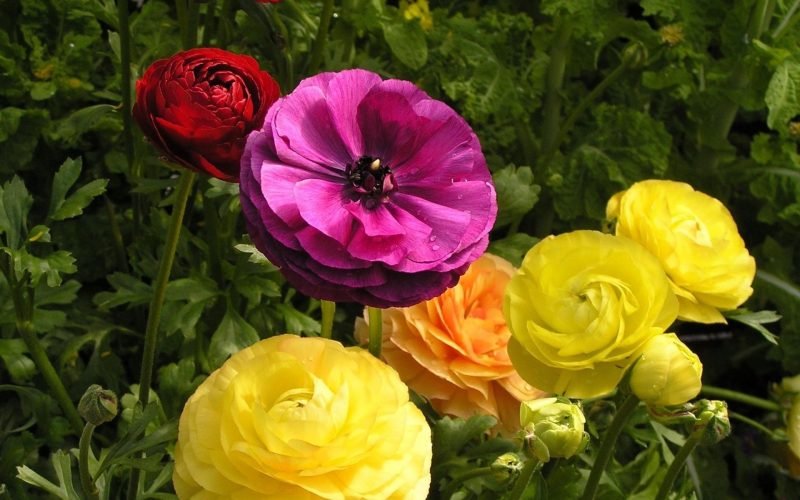
The flower does not winter in the open ground. In autumn, they dig it up and store tubers in a cool, dark place all winter. This is usually done immediately after yellowing and drying of the foliage.
The foliage with the stems is cut with a knife, the roots are carefully removed from the ground, making sure that they are not damaged.
Storage conditions for ranunculus tubers
Dug root tubers, before laying them for storage, free from the ground, washed, dried. Plants that have grown over the summer are divided carefully so as not to break the fragile roots. Separated tubers are treated with a solution of any fungicide to prevent decay.
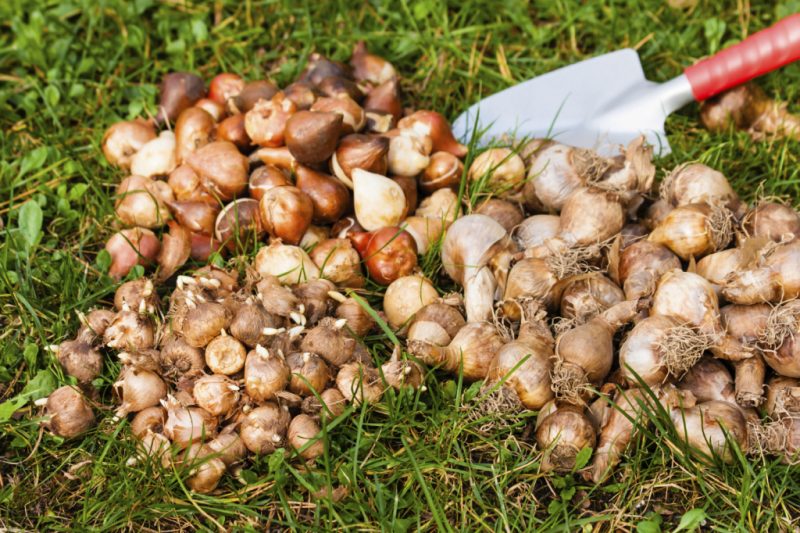
Store at + 5 ° C or + 10 ° C, wrapped in paper, put in sand, peat or sawdust, in a ventilated, dark place. If you dry the tubers for 3 weeks, then you can store them at room temperature.
In winter, root tubers are checked. Having found a rotten root, it is removed by treating the site of damage with charcoal. Heavily struck specimens are thrown out.
Pest and Disease Control
Ranunculus ranunculus is little susceptible to disease. Due to caustic, poisonous juice, insect pests do not really like it. At home, the cause of plant diseases is most often errors in care.Nematodes, thrips or a spider mite can settle on garden buttercups.
In the open ground
When the root nematodes are affected, the plant begins to lag behind in growth, its foliage withers and turns brown. If you dig a flower, ugly growths can be found on its roots. To combat the parasite, the roots are dipped in hot water (about 50 ° C) for half an hour.

Finding spider mites or thrips on the leaves, the ranunculi are treated with Fitoverm or another acaricide and insecticide. Spraying is repeated several times with an interval of 10 days.
At home

At home, gray or white plaque may appear on the stems and leaves of the plant. From excessive watering, the buttercup is affected by fungal diseases. In this case, it is treated with a fungicide solution, the damaged parts are cut, the flower is transplanted into fresh soil and watering is reduced.


